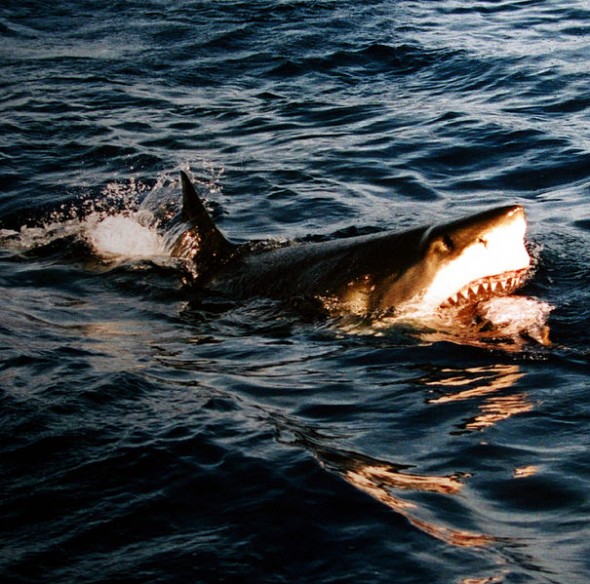
Following on from my post on the global phenomenon that is shark-spotting, I found a couple more papers about why it’s good to keep sharks alive… and not just for tourists but for scientists too.
University of Miami researchers have been looking into ways of studying sharks without killing them and also getting the skinny on shark tagging – one of the main ways of figuring stuff out about these toothsome beasties while keeping them alive.
There are all sorts of things you can find out from a dead shark: how old it was when it died (from growth marks in its backbone or vertebral centra), what it had for its last meal (aka gut contents analysis), how old it was when it started having babies etc. – all important stuff when it comes to building population models and working out how much fishing a population can tolerate.
And to make things easier, there are lots of fisheries around the globe busily rounding up millions of sharks – so (sadly) there’s a ready supply of dead sharks to study. But relying on fisheries for research isn’t a great idea because they tend to operate only at certain times of year and are often biased towards a sub-section of the shark community e.g. males or females, young uns or oldies. And for scientists to venture out and deliberately kill sharks – especially the rare, top oceanic predators – isn’t an especially good plan.
But the good news is, as Neil Hammershlag and James Sulikowski point out, there’s a gamut of techniques available to the 21st century researchers who are interested in the lives and loves of elasmobranchs but who don’t want a dead shark on their hands.
 These days it’s possible to persuade a shark to sick up its stomach contents without having to slit it open (or you might prefer to use the proper terms stomach flushing or “gastral lavage”). This apparently works especially well when teamed up with DNA analysis of partially digested food scraps. Hmmm, sounds delicious doesn’t it, but it means you can work out which particular species the shark’s been munching on.
These days it’s possible to persuade a shark to sick up its stomach contents without having to slit it open (or you might prefer to use the proper terms stomach flushing or “gastral lavage”). This apparently works especially well when teamed up with DNA analysis of partially digested food scraps. Hmmm, sounds delicious doesn’t it, but it means you can work out which particular species the shark’s been munching on.
Another technique to add into the “what sharks eat” mix, is an approach called stable isotope analysis (or SI for short). All you need is a little snippet of tissue (a muscle biopsy, a fin clipping, or a blood sample – certainly not a whole dead shark), whiz it through an isotope-measuring machine, and you can find out a whole bunch of stuff about your shark’s eating habits. It tells you the shark’s place in the food chain (pretty high up for top predators, obviously), whether its favourite food changes throughout its life, and even where abouts in the oceans its been finding food.
It’s all based on the clever trick of reading the chemical fingerprint left behind by food after its been digested and absorbed into the body. Yep, you got it: “You are what you eat”. Essentially there’s a tiny message written inside every cell by the proportions of different isotopes of carbon, nitrogen or sulphur (Wikipedia does a fairly good job of explaining this in more detail, if you want it).
Besides all the gutsy stuff, you can give a live shark an ultrasound to figure out if its pregnant/sexually mature/how many unborn pups she’s carrying etc etc. Combine that with a quick blood test to work out hormone levels and it gives a clear picture of elasmobranch reproduction.
So, all-in-all there is a heck of a lot we can learn from sharks while they’re still alive (but you do have to carefully catch them and let them go in the same condition you found them in – or as near as possible).
And then of course there’s shark tagging. But more on that next time.
Hammershlag and Sulikowski’s paper on non-lethal shark research techniques is published in the journal of Endangered Species Research (here’s a PDF posted on their research webpages).
Leave a Reply